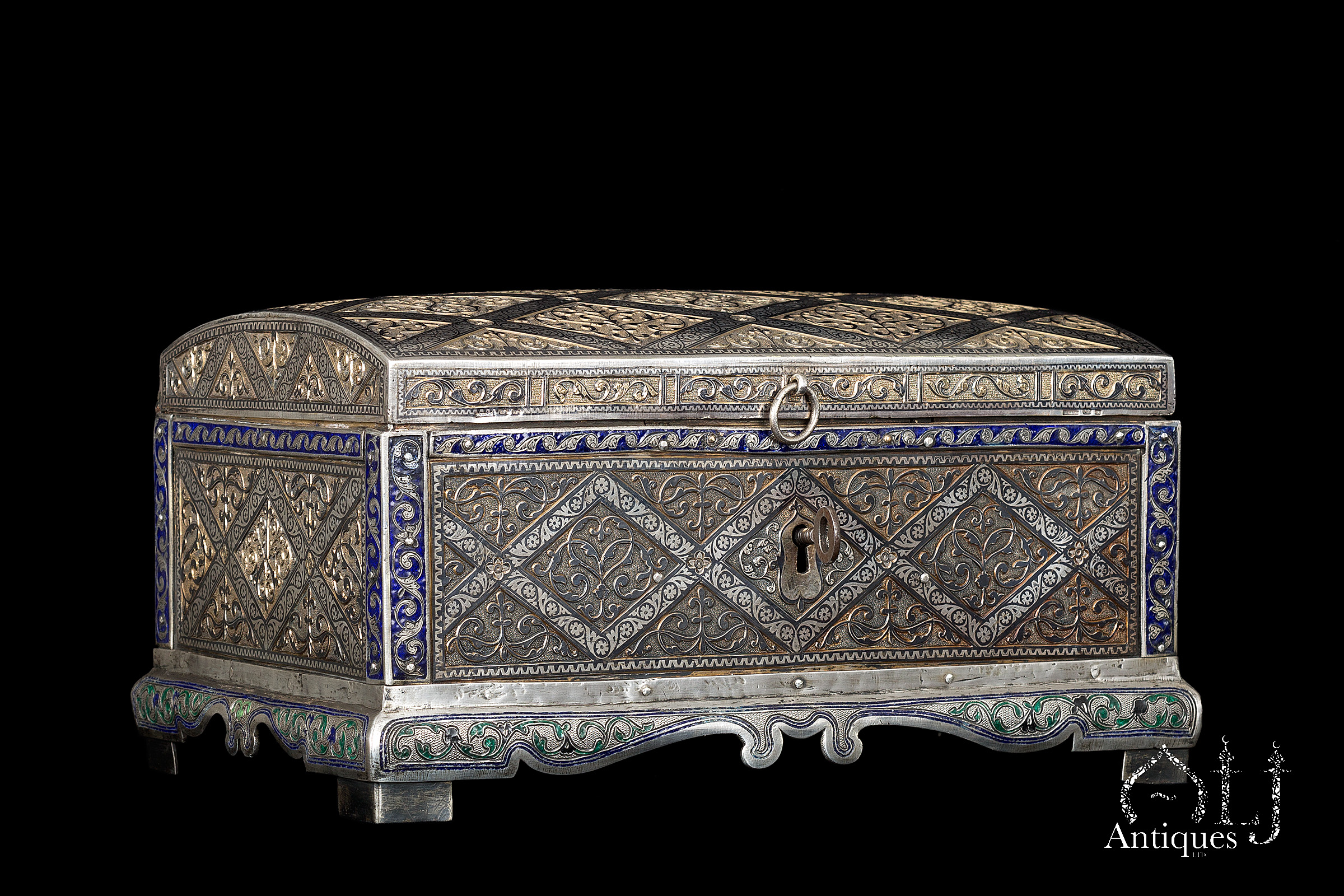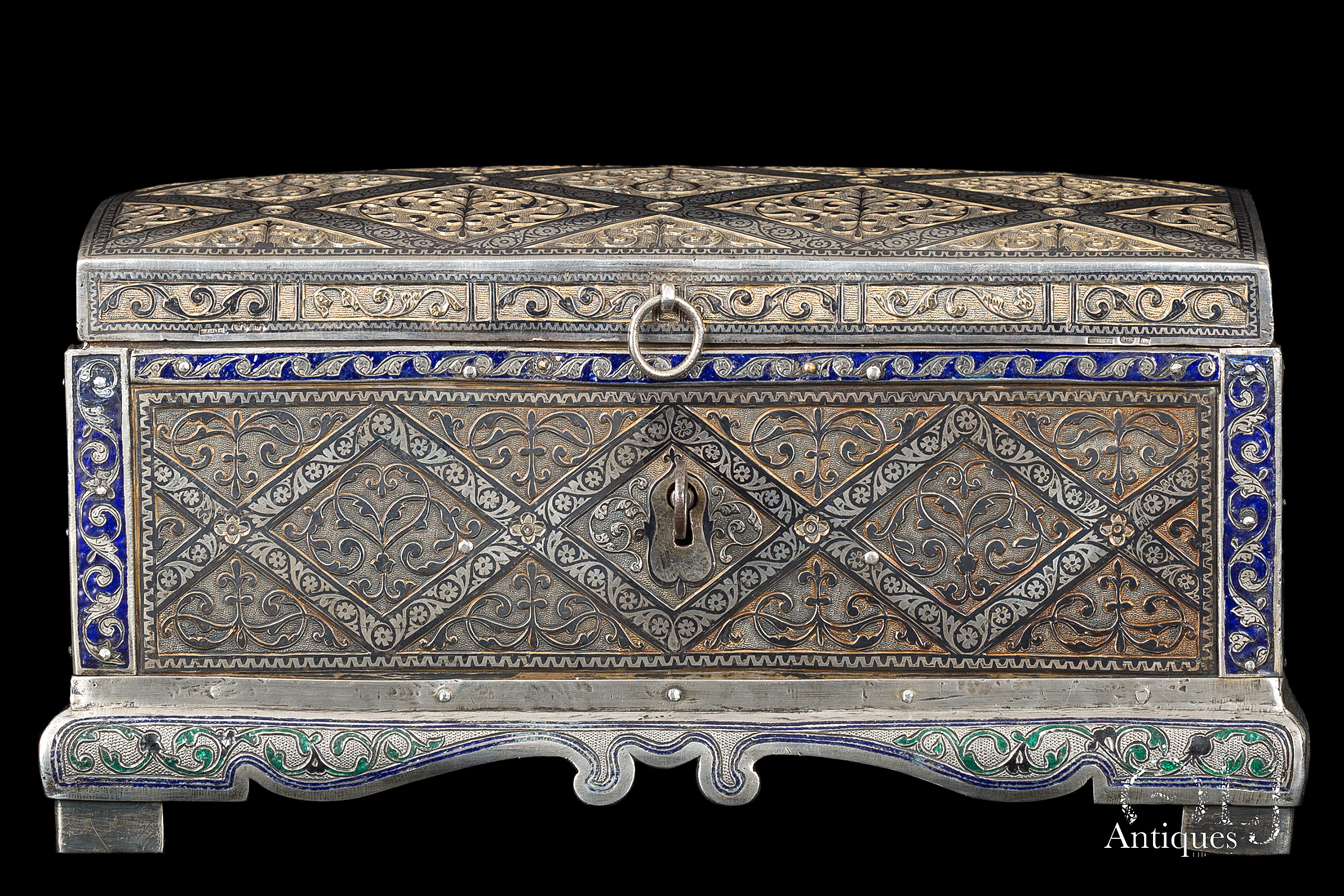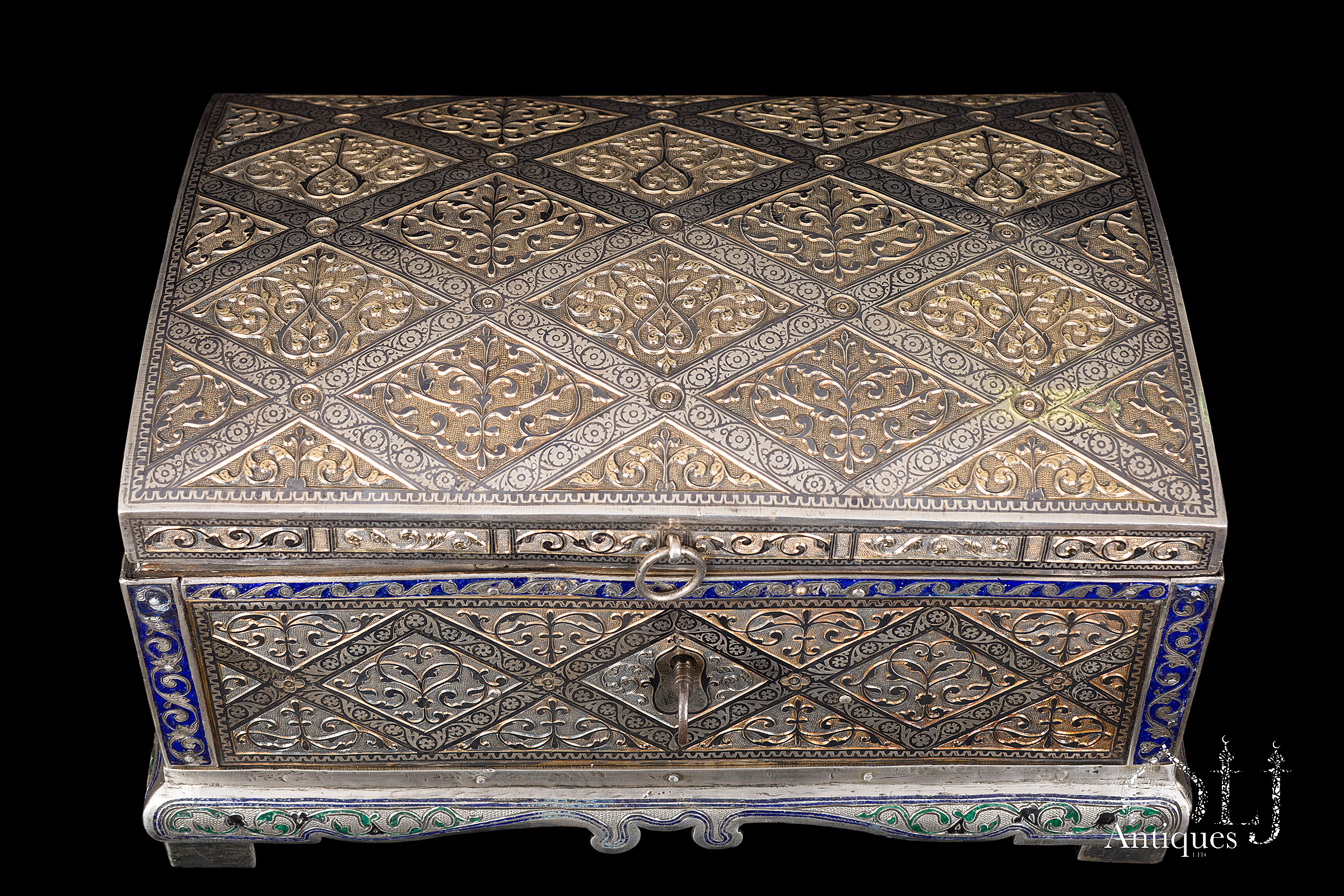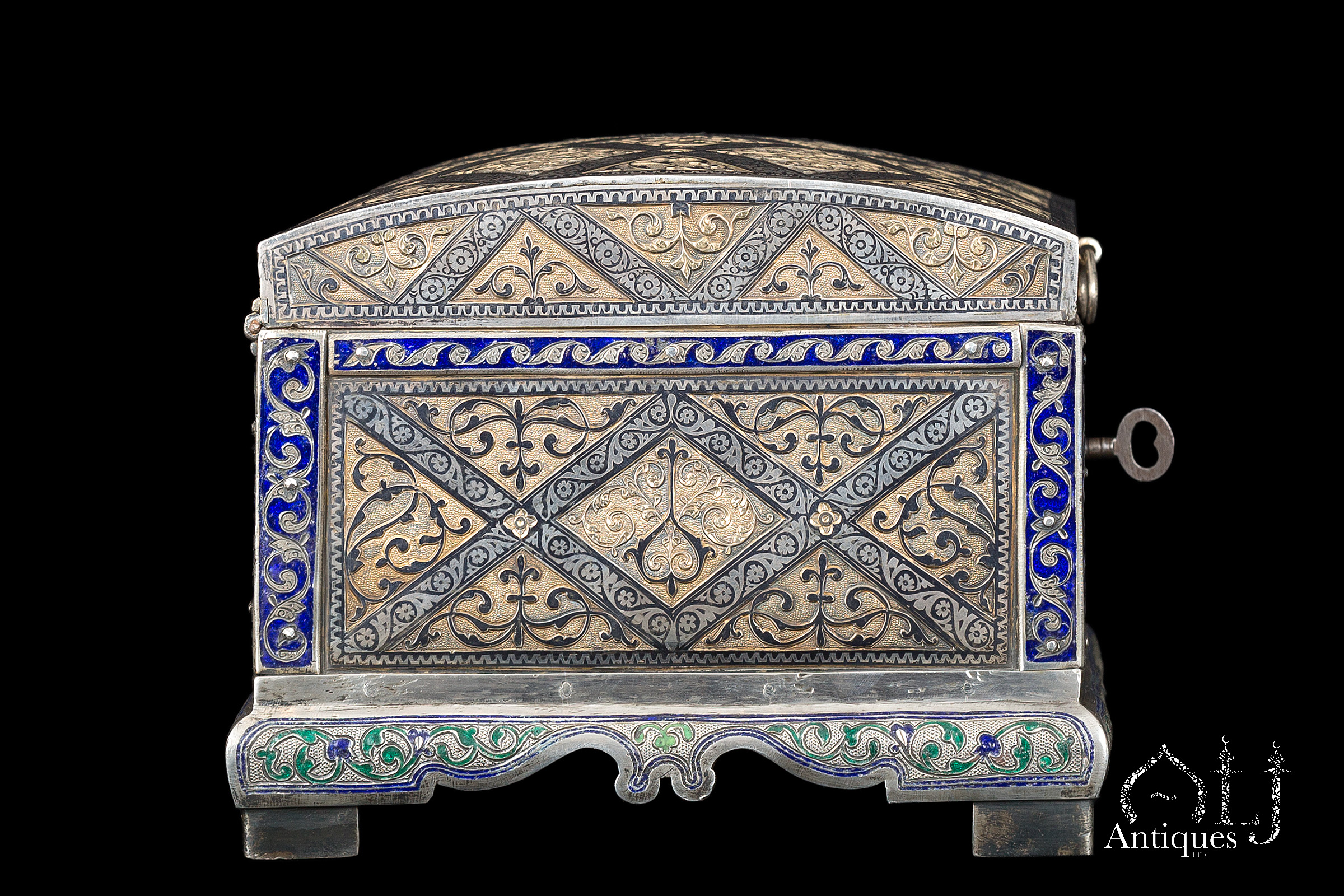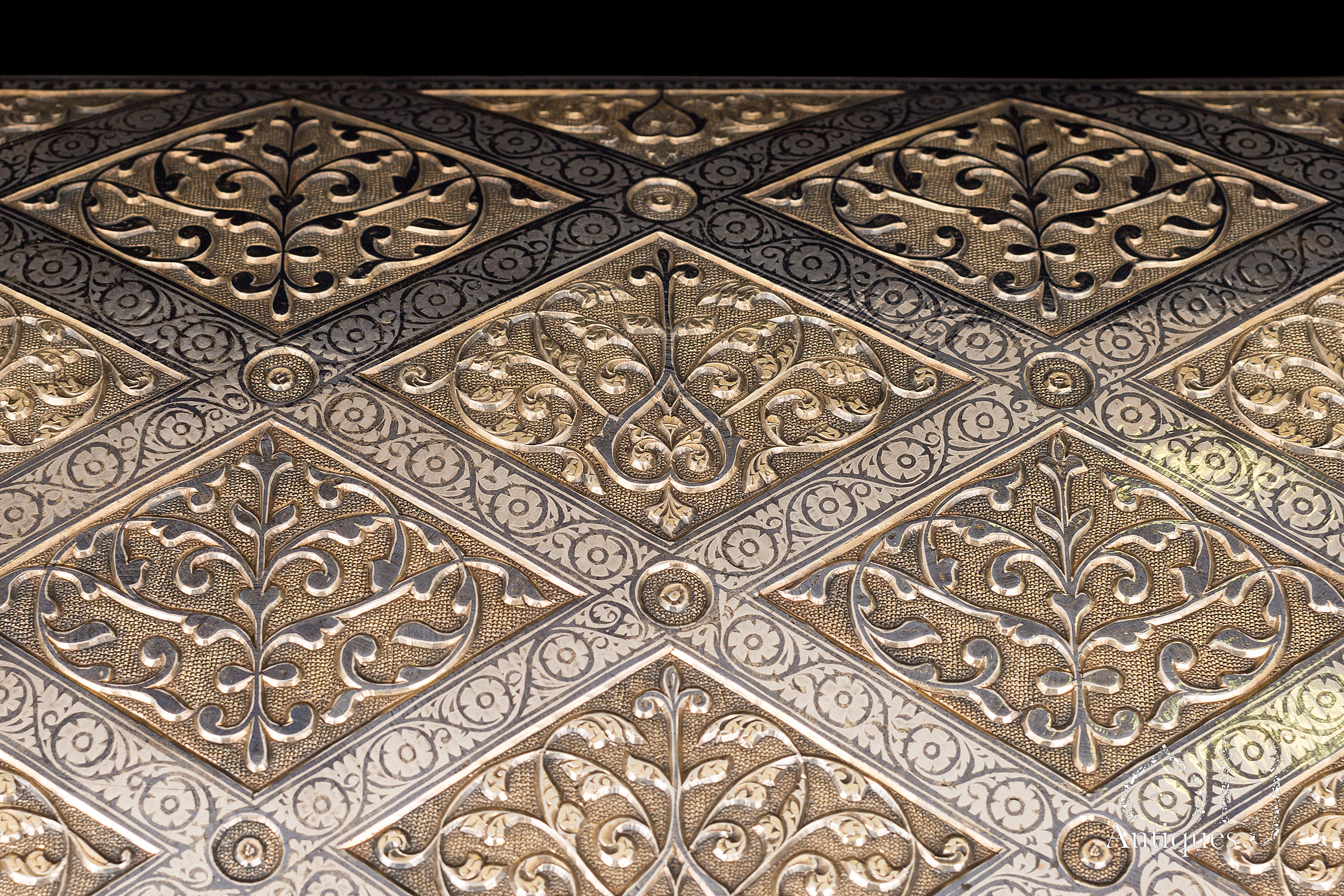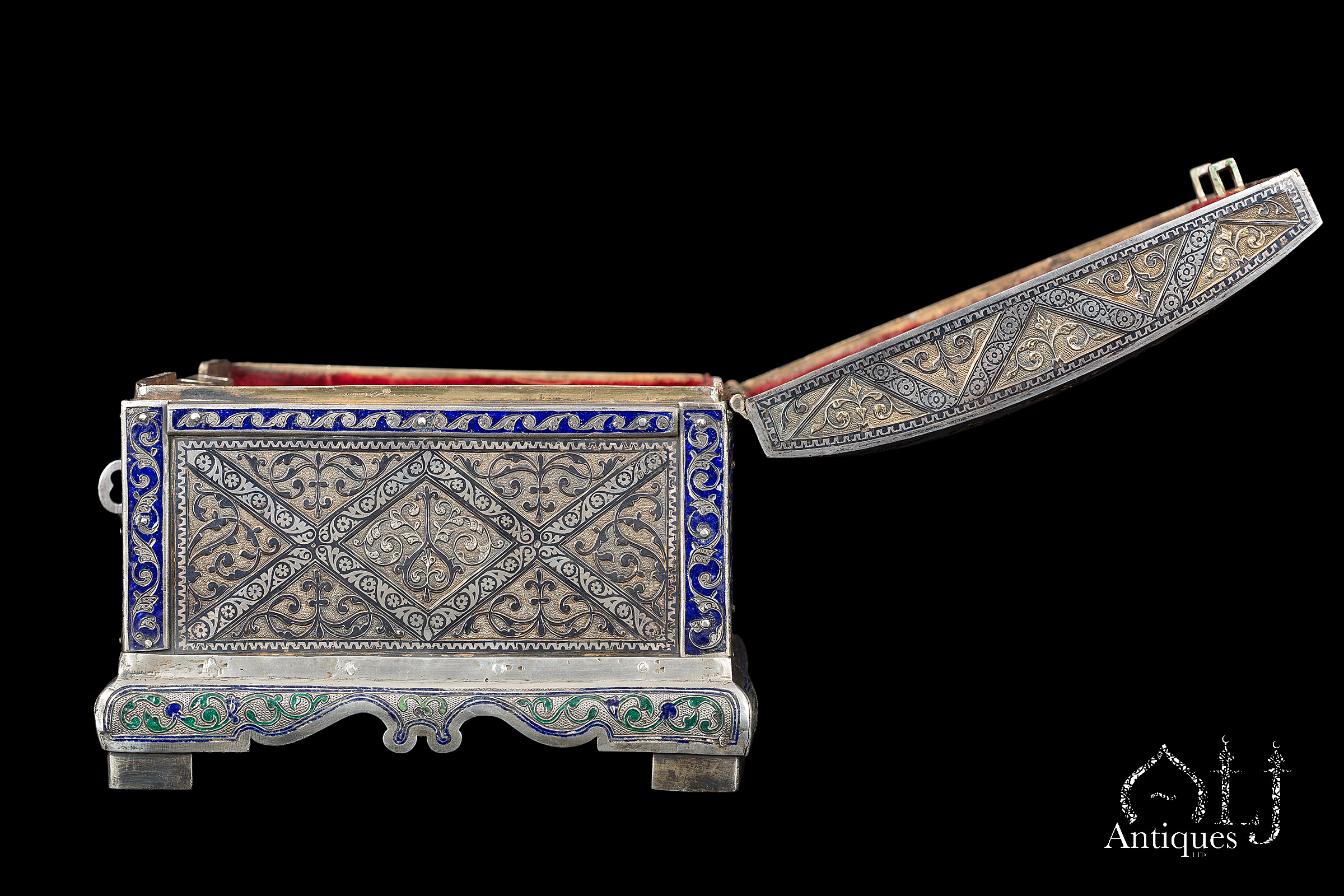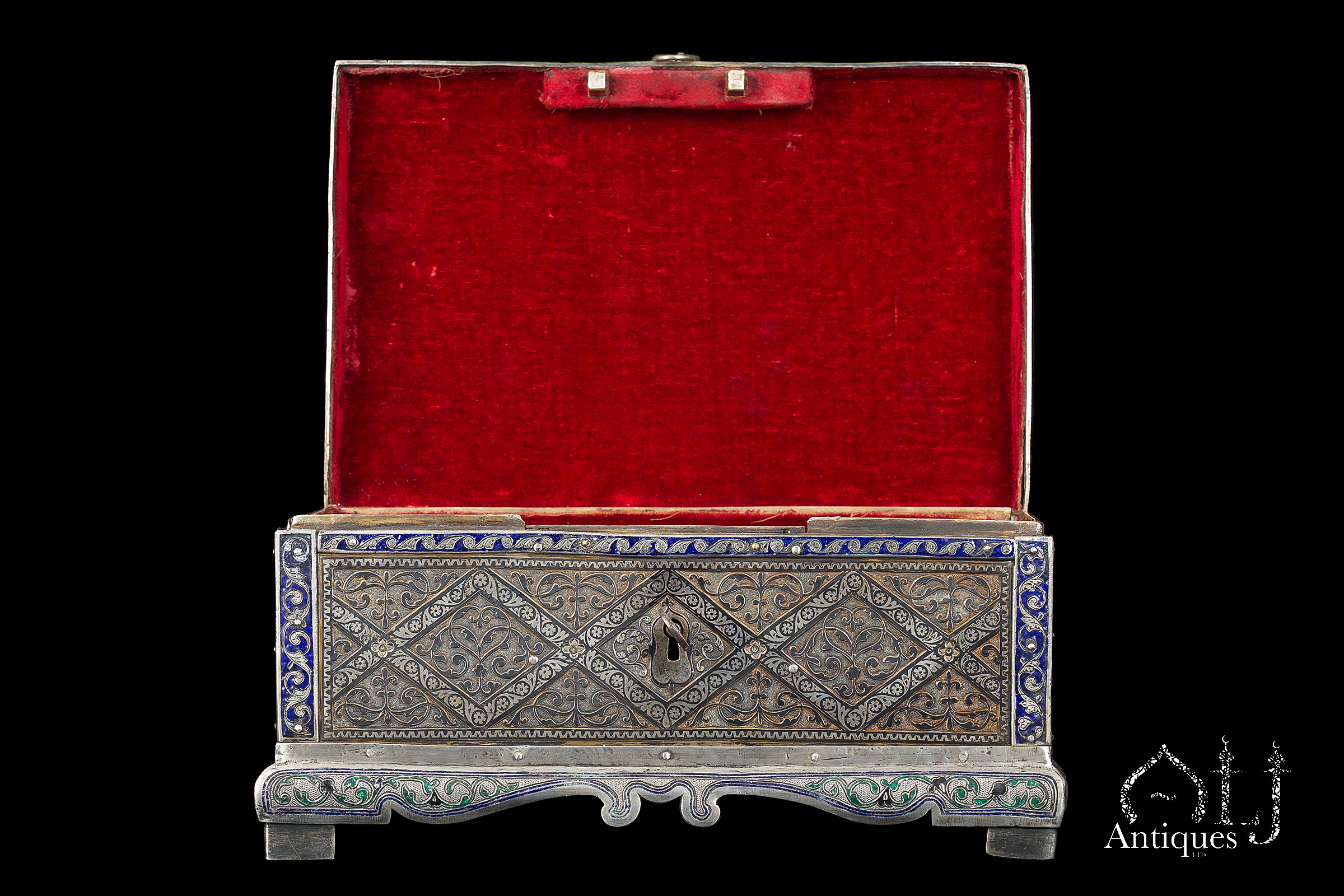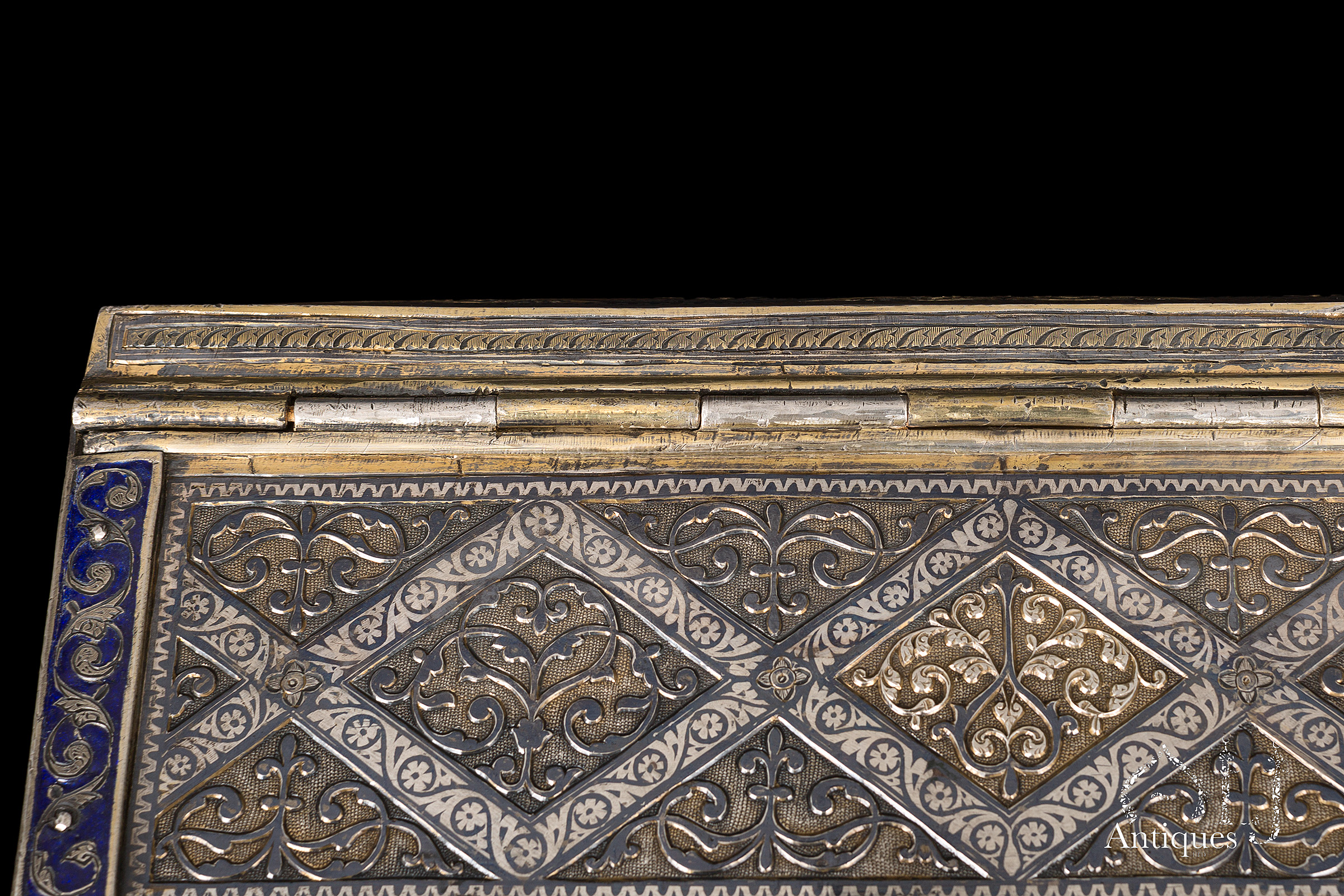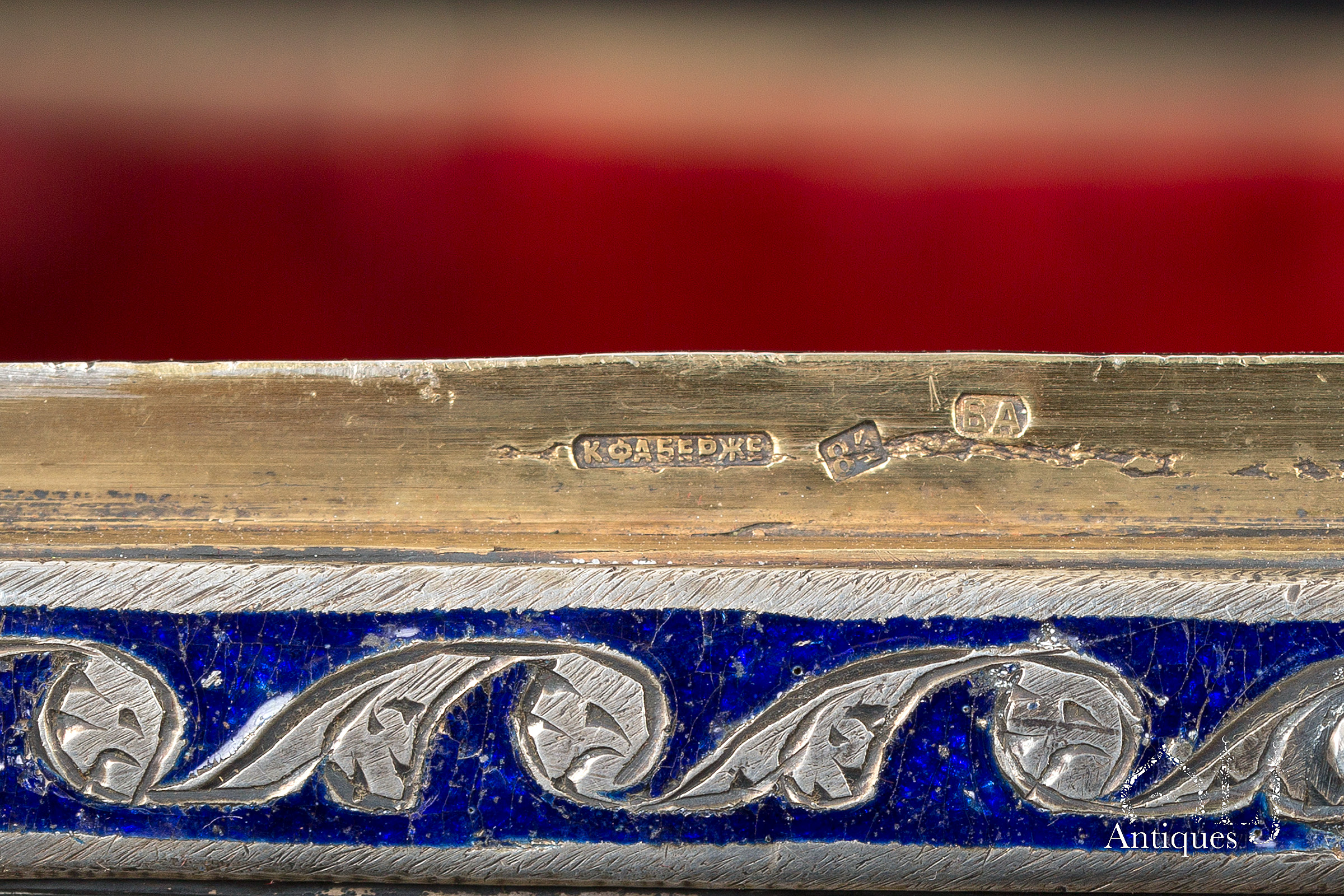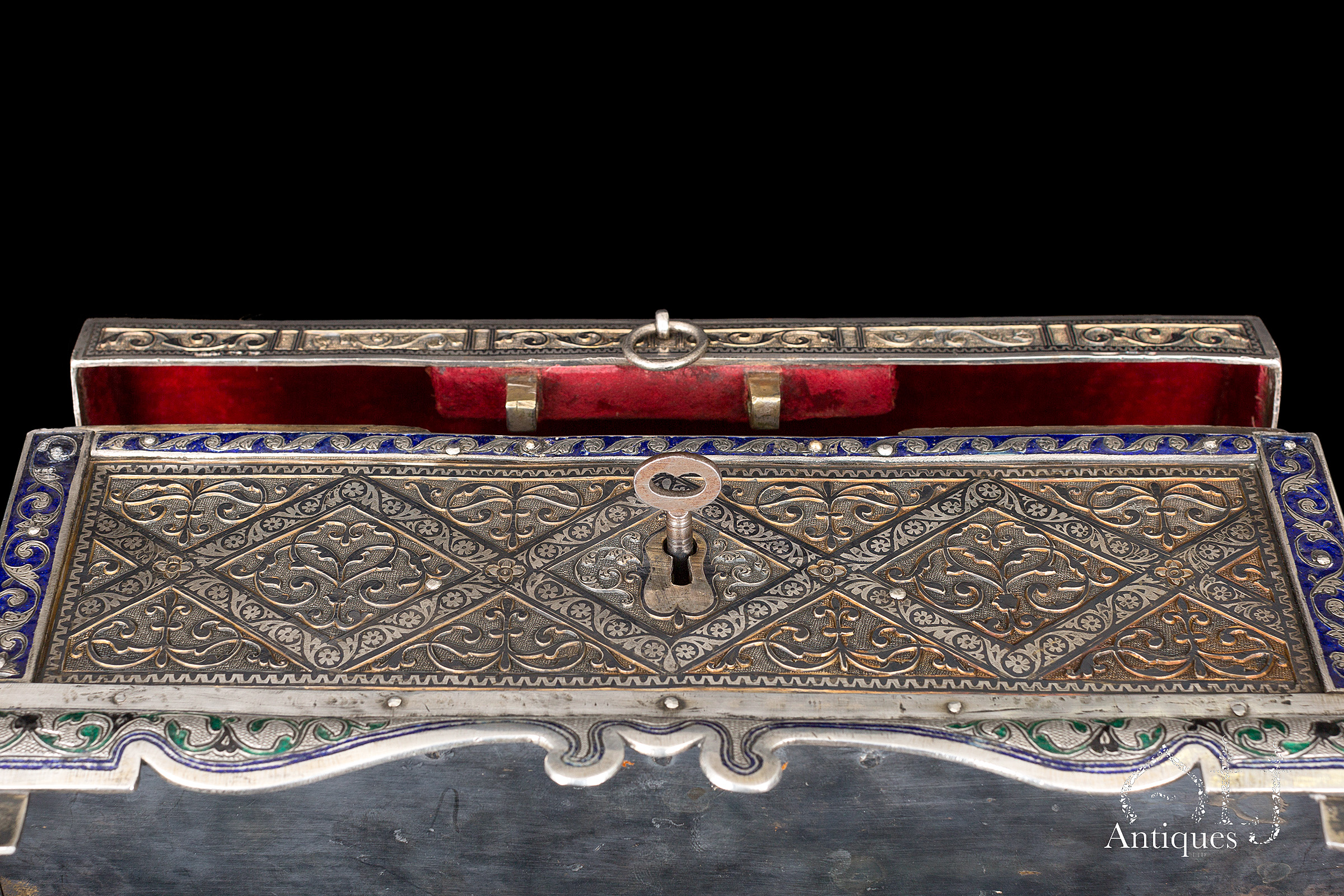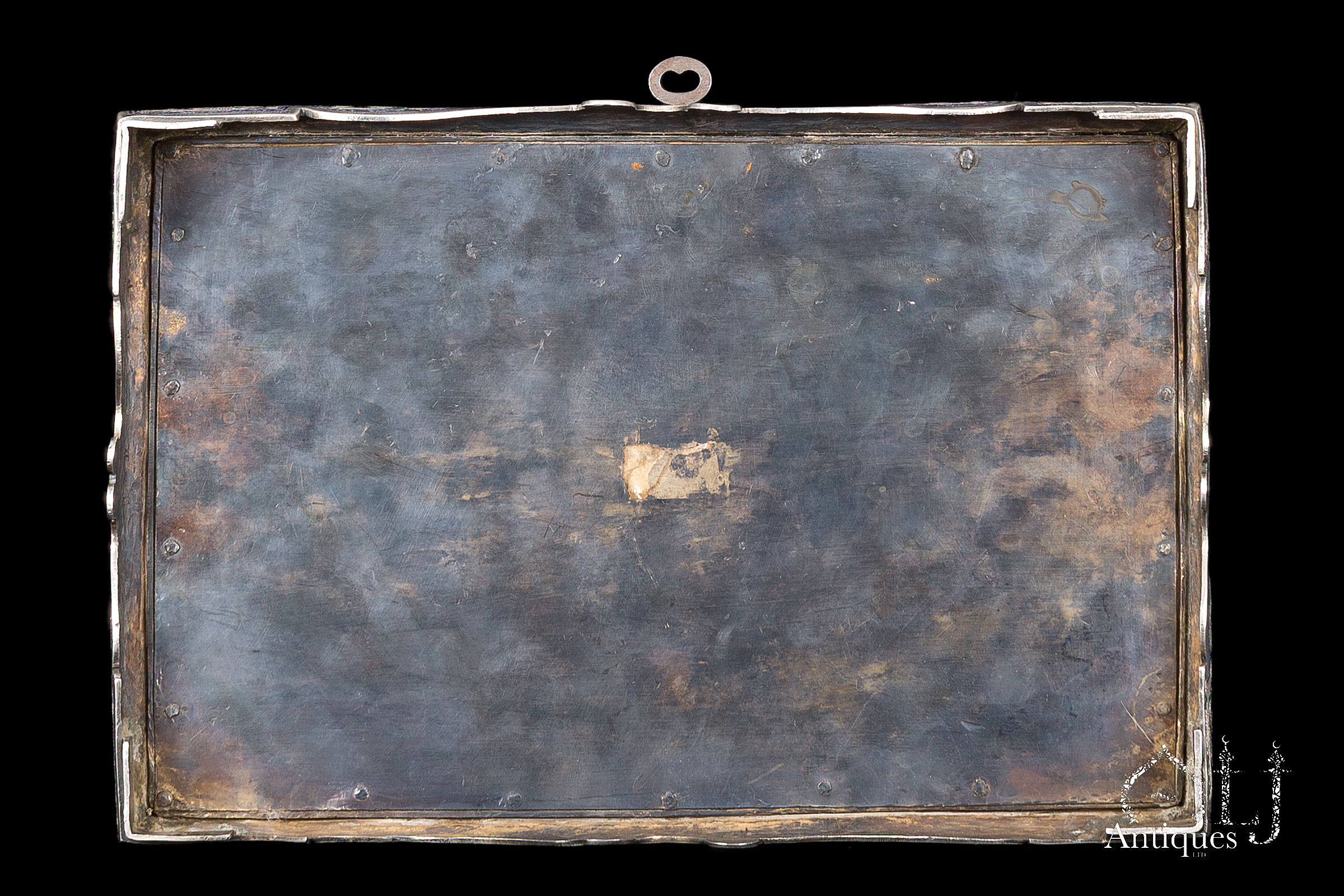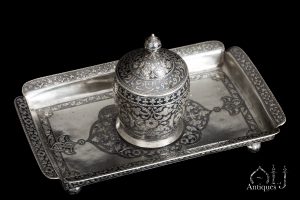Description
The silversmith master who had done this rather very unusual and beautiful casket had tried to show his outstanding talent and expertise by employing various types of techniques to achieve this masterpiece.
The reason why we are more prone to think that this piece was made by a Caucasian master rather than a master from the other Central Asian silversmithing centres which also lies on the silk road is the huge similarities of the techniques and the decoration used in the Caucasian silversmithing.
The only one similarity that do exist in our present lot which is used in the other centres of Bukhara or Kokand is the use of the geometrical rhombus and the triangle motifs which can be seen clearly in our current lot, please see lot our third reference book used, A song in Metal, Folk Art of Uzbekistan, Please see the enamelled silver casket made in the 19th. Century in Kokand-Uzbekistan; lot no. 37 illustrated on page 67.
.
Although both the Caucasian and the Central-Asian silversmiths do use both techniques of nielloware and the enamelling of silver, but when in it comes to mixing the two techniques together in making one particular silver item, the Central-Asian silversmiths tend to use more colourful glass-based enamelling with a little bit of nielloware where as the Caucasian silversmith centres tend to do the opposite just like in our current lot.
For comparison to other related works exhibited on the reference book of Searching for lost Relics, by Isa Askhabov & Khamzat Askhabov, Cultural Heritage, please note the similar nielloed silver decoration executed on the handle of the Caucasian cane with a blade, please notice the blossoming flower with seven petals and circle in the middle, the item is catalogued on page 87.
For the zigzag motif which is usually used to decorate the borders, please notice the similarities to various items such as the borders of the Dagestan pistols illustrated in the above reference on pages 92-93.
In regards to the raised arabesque and floral motifs located at the centre of both the geometrical rhombus and the triangle shapes, this can easily be found on the majority of Caucasian daggers, please see the related examples catalogued on pages 100 & 101.
In regards to the blue enamelled series of leaning leaves which can be found at the top borders of the casket, please notice the identical decoration found at the same above reference on the Caucasian dagger illustrated on page 107.
In regards to the colourful enamelling used, please see the nielloed and enamelled dagger illustrated on pages 388 & 389.
For another related Tbilisi enamelled silver dagger please see the other reference book used of the Arms and Armour of the Caucasus, catalogued on page 100.

